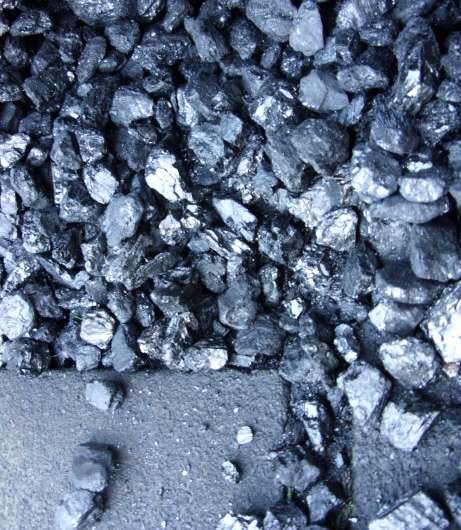January 6, 2020 report
Making bio-coal from plant waste to mitigate climate change

A team of researchers affiliated with several institutions in China has found a way to produce bio-coal from plant waste. In their paper published in the journal Science Advances, the group describes their process and how the resulting product could be used.
As the planet continues to warm unabated, scientists around the world seek ways to reduce the amount of carbon dioxide humans pump into the atmosphere. In this new effort, the team in China has found a way to create a type of bio-coal that is much greener than natural coal.
Prior efforts to produce a type of fuel from plant waste have led to the development of bio-oils that can be used as an energy source—but they have several drawbacks. They are corrosive, chemically unstable and are not suitably caloric to be economically viable. However, the team in China found that such oils could be used to make bio-coal, which would be viable. They simply heated the oil to 240 degrees Celsius. Doing so resulted in the formation of a hard, black material similar in appearance to natural coal. Testing showed that the bio-coal could be burned just like natural coal to produce heat to boil water and drive turbines.
The researchers noted that the bio-coal could be made with a variety of ingredients, all of which are generally considered to be biowaste products, such as rice husks, sawdust, wheat or straw, bagasse and soybean straw. They further noted that rice husks worked the best, which, they note, is abundant in many places around the world, and is very inexpensive. Also, because burning the bio-coal releases far less carbon dioxide, the researchers suggest it could be used to replace natural coal. They suggest that replacing the coal burned in China with bio-coal would result in reducing CO2 emissions by 748 million tons, or around 6 percent of China's total output.
The researchers suggest their bio-coal could be used to replace both coal and gases made from plant material. They note their method does not involve using land for growing the biomaterial that could be used for growing food. They also found that it was cleaner than coal in another way—it did not contain zinc, lead, manganese or cadmium, which meant burning it would not emit them into the air. They further note that their bio-coal contained no copper or nickel.
More information: Bin-Hai Cheng et al. Bio-coal: A renewable and massively producible fuel from lignocellulosic biomass, Science Advances (2020). DOI: 10.1126/sciadv.aay0748
Journal information: Science Advances
© 2020 Science X Network




















